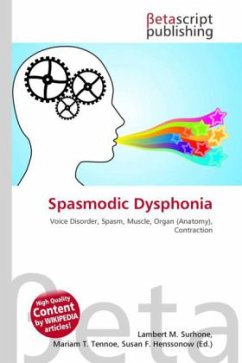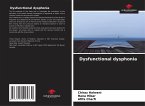Please note that the content of this book primarily consists of articles available from Wikipedia or other free sources online. Spasmodic dysphonia (or laryngeal dystonia) is a voice disorder characterized by involuntary movements of one or more muscles of the larynx (vocal folds or voice box) during speech. The three types of spasmodic dysphonia (SD) are adductor spasmodic dysphonia, abductor spasmodic dysphonia and mixed spasmodic dysphonia. In adductor spasmodic dysphonia, sudden involuntary muscle movements or spasms cause the vocal folds (or vocal cords) to slam together and stiffen. These spasms make it difficult for the vocal folds to vibrate and produce voice. Words are often cut off or difficult to start because of the muscle spasms. Therefore, speech may be choppy and sound similar to stuttering. The voice of an individual with adductor spasmodic dysphonia is commonly described as strained or strangled and full of effort. Surprisingly, the spasms are usually absent while laughing, singing, speaking at a high pitch or speaking while breathing in. Stress, however, often makes the muscle spasms more severe.
Bitte wählen Sie Ihr Anliegen aus.
Rechnungen
Retourenschein anfordern
Bestellstatus
Storno








